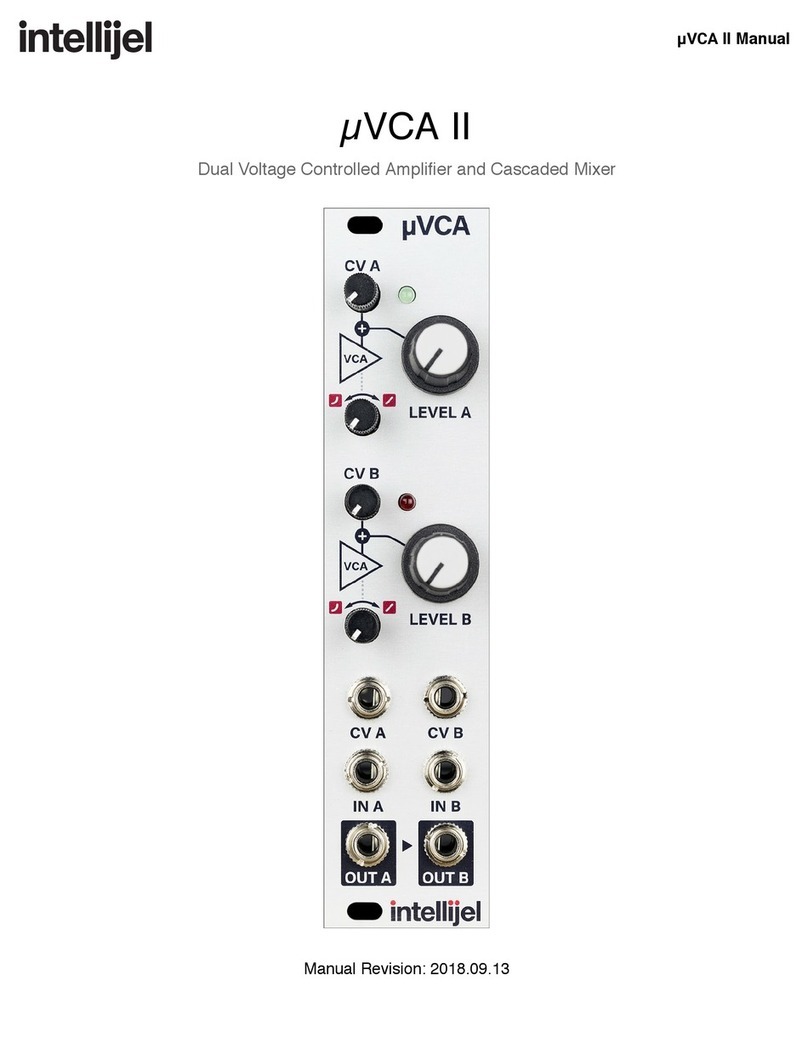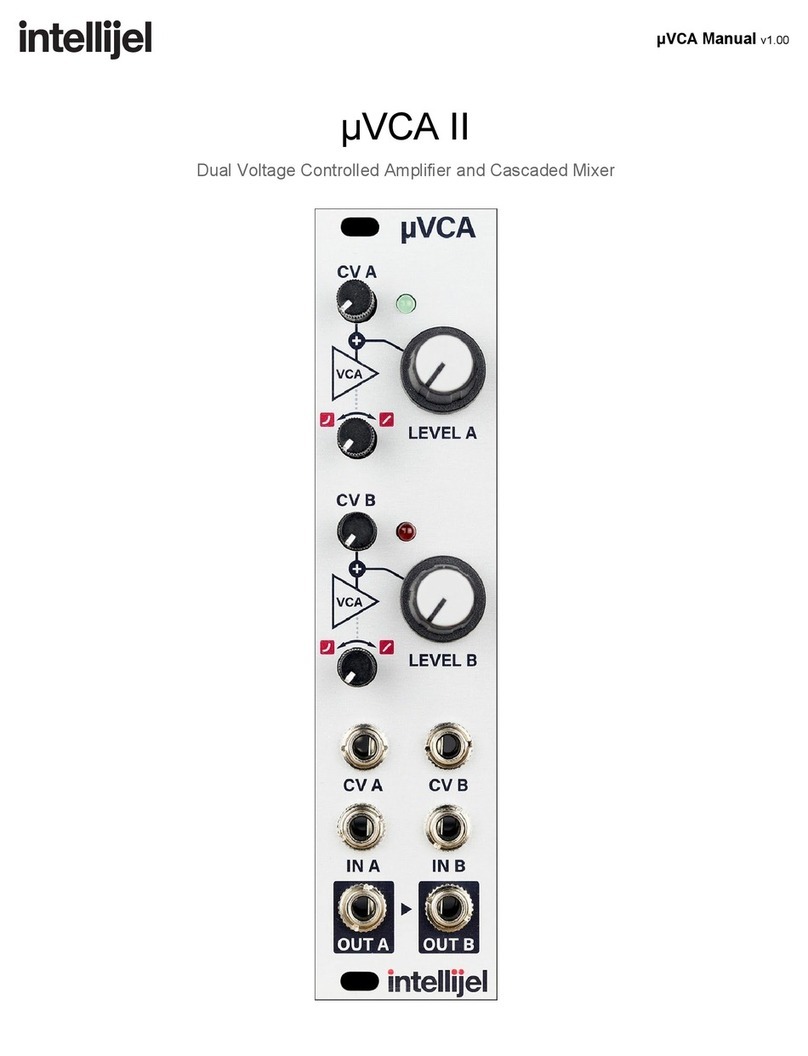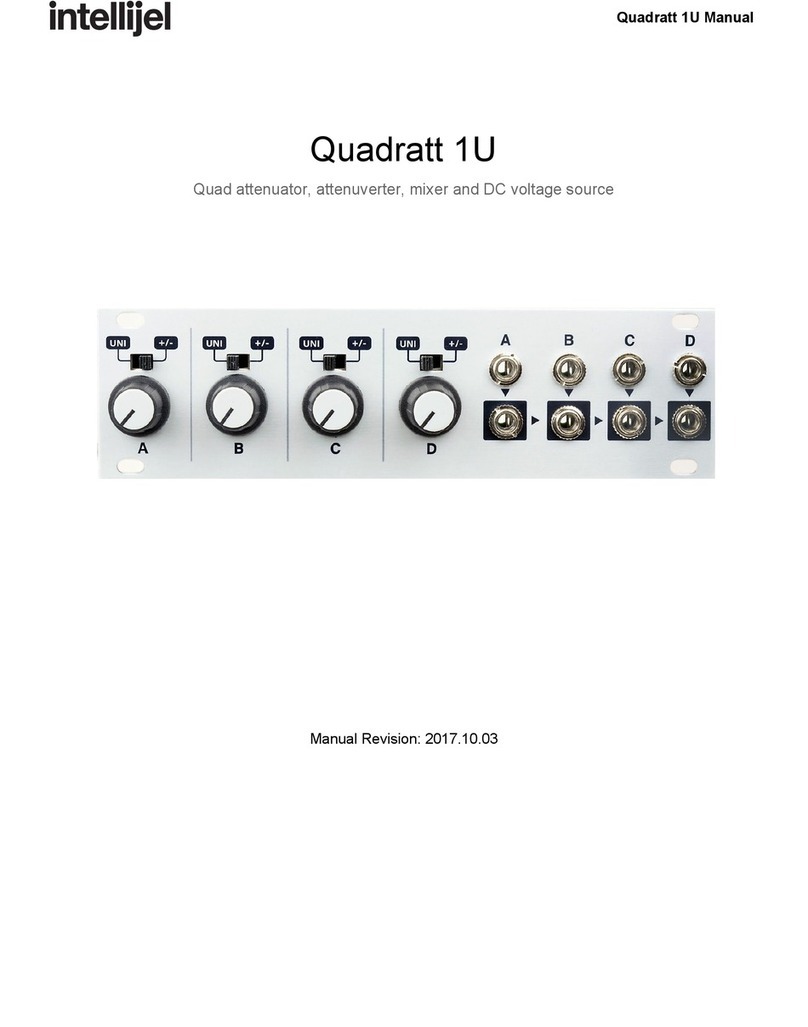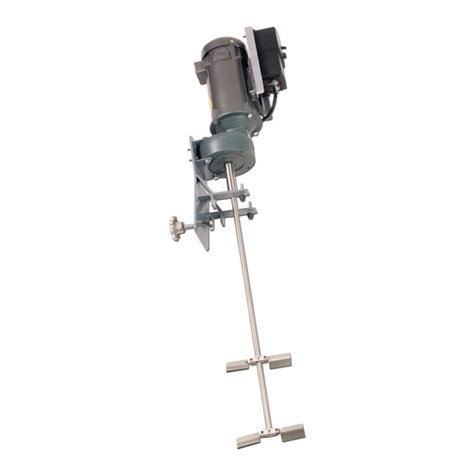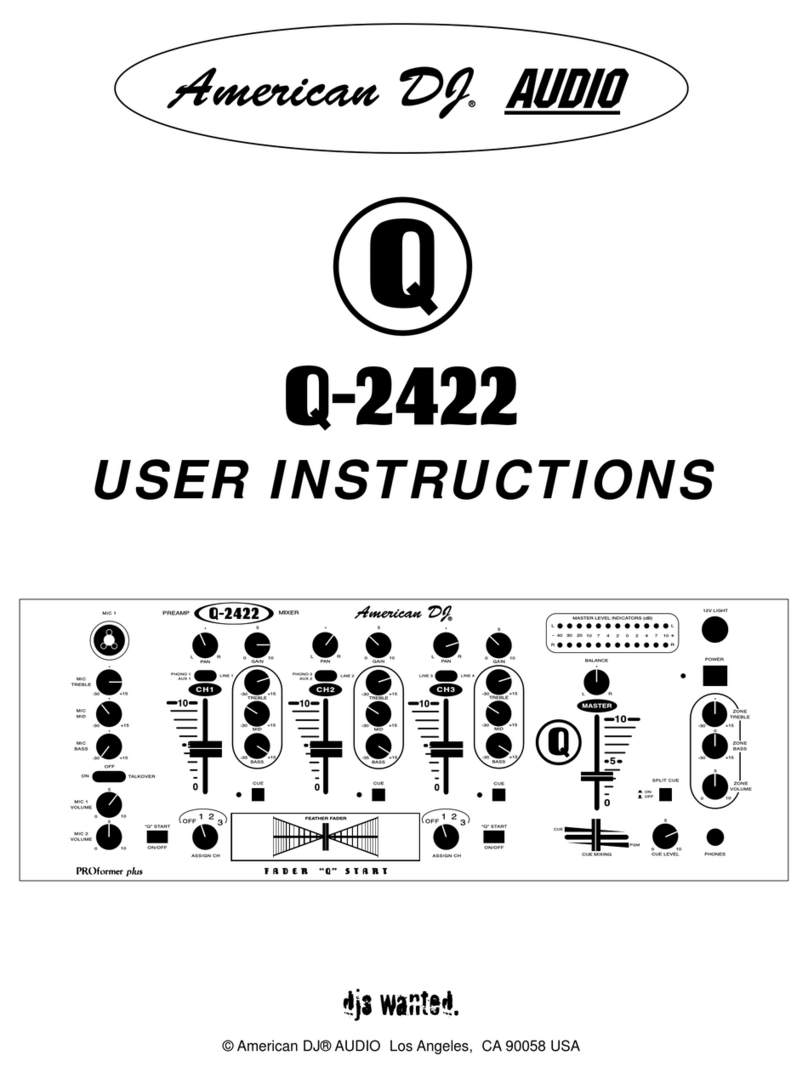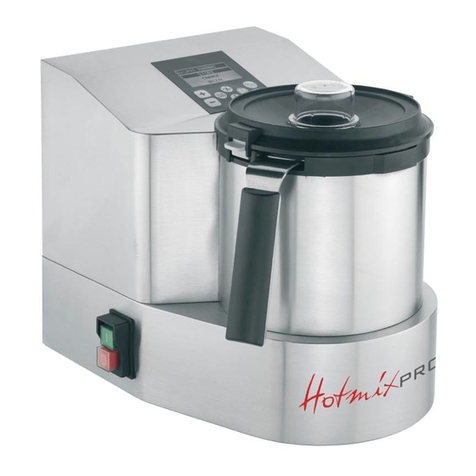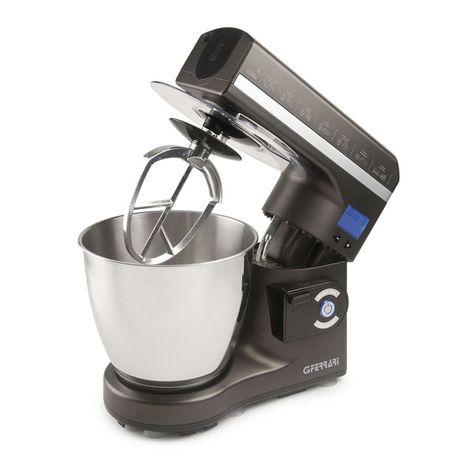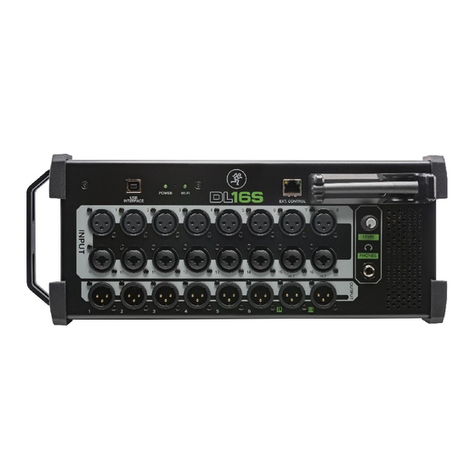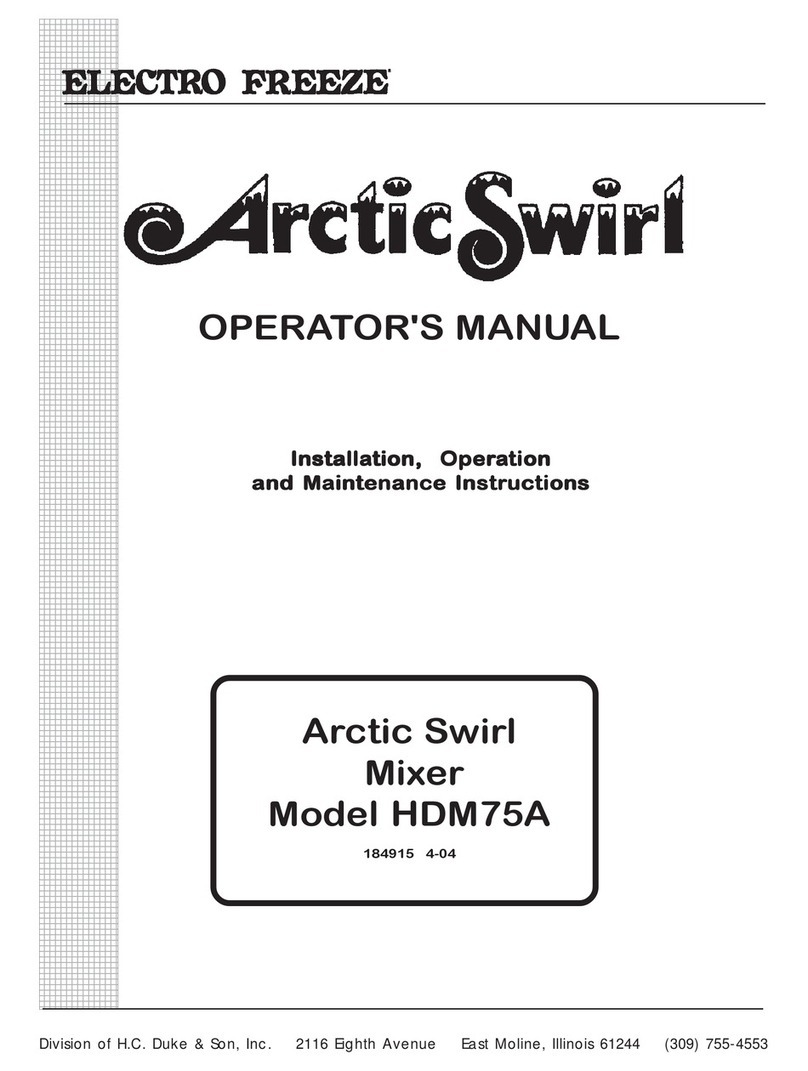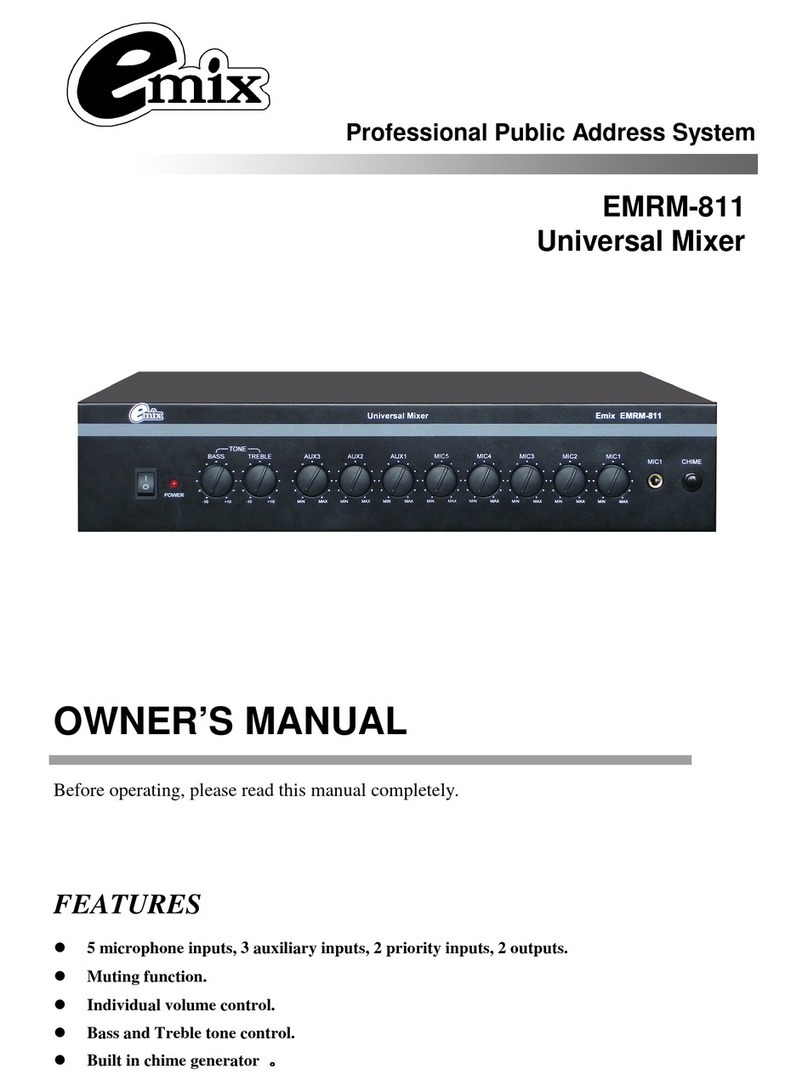Intellijel Triatt User manual

Triatt Manual
Triatt
Triple Attenuator / Inverter / Attenuverter / Mixer / DC Voltage Source
Manual Revision: 2018.09.13

Triatt Manual
Table of Contents
Table of Contents
Compliance
Installation
Installing Your Module
Overview
Features
Front Panel
Controls
Inputs & Outputs
Rear Jumpers
Technical Specifications
Page 1

Triatt Manual
Compliance
This device complies with Part 15 of the FCC Rules. Operation is subject to the
following two conditions: (1) this device may not cause harmful interference, and
(2) this device must accept any interference received, including interference that
may cause undesired operation.
Changes or modifications not expressly approved by Intellijel Designs, Inc. could
void the user’s authority to operate the equipment.
Any digital equipment has been tested and found to comply with the limits for a
Class A digital device, pursuant to part 15 of the FCC Rules. These limits are
designed to provide reasonable protection against harmful interference when the
equipment is operated in a commercial environment. This equipment generates,
uses, and can radiate radio frequency energy and, if not installed and used in
accordance with the instruction manual, may cause harmful interference to radio
communications.
This device meets the requirements of the following standards and directives:
EMC: 2014/30/EU
EN55032:2015 ; EN55103-2:2009 (EN55024) ; EN61000-3-2 ; EN61000-3-3
Low Voltage: 2014/35/EU
EN 60065:2002+A1:2006+A11:2008+A2:2010+A12:2011
RoHS2: 2011/65/EU
WEEE: 2012/19/EU
Page 2

Triatt Manual
Installation
Intellijel Eurorack modules are designed to be used with a Eurorack-compatible case and power
supply. We recommend you use Intellijel cases and power supplies.
Before installing a new module in your case, you must ensure your power supply has a free
power header and sufficient available capacity to power the module:
● Sum up the specified +12V current draw for all modules, including the new one. Do the
same for the -12 V and +5V current draw. The current draw will be specified in the
manufacturer's technical specifications for each module.
● Compare each of the sums to specifications for your case’s power supply.
● Only proceed with installation if none of the values exceeds the power supply’s
specifications. Otherwise you must remove modules to free up capacity or upgrade your
power supply.
You will also need to ensure your case has enough free space (hp) to fit the new module. To
prevent screws or other debris from falling into the case and shorting any electrical contacts, not
leave gaps between adjacent modules, and cover all unused areas with blank panels. Similarly,
do not use open frames or any other enclosure that exposes the backside of any module or the
power distribution board.
You can use a tool like ModularGrid to assist in your planning. Failure to adequately power your
modules may result in damage to your modules or power supply. If you are unsure, please
contact us before proceeding.
Installing Your Module
When installing or removing a module from your case
always turn off the power to the case and disconnect the
power cable. Failure to do so may result in serious injury
or equipment damage.
Ensure the 10-pin connector on the power cable is
connected correctly to the module before proceeding.
The red stripe on the cable must line up with the -12V
pins on the module’s power connector. The pins are
indicated with the label -12V, a white stripe next to the
connector, the words “red stripe”, or some combination of
those indicators.
Page 3

Triatt Manual
Most modules will come with the cable already connected but it is good to double check the
orientation. Be aware that some modules may have headers that serve other purposes so
ensure the cable is connected to the right one.
The other end of the cable, with a 16-pin
connector, connects to the power bus board of
your Eurorack case. Ensure the red stripe on
the cable lines up with the -12V pins on the
bus board. On Intellijel power supplies the
pins are labelled with the label “-12V” and a
thick white stripe:
If you are using another manufacturer’s power
supply, check their documentation for
instructions.
Once connected, the cabling between the module and power supply should resemble the
picture below:
Before reconnecting power
and turning on your modular
system, double check that
the ribbon cable is fully
seated on both ends and
that all the pins are correctly
aligned. If the pins are
misaligned in any direction
or the ribbon is backwards
you can cause damage to
your module, power supply,
or other modules.
After you have confirmed all
the connections, you can
reconnect the power cable and turn on your modular system. You should immediately check that
all your modules have powered on and are functioning correctly. If you notice any anomalies,
turn your system off right away and check your cabling again for mistakes.
Page 4

Triatt Manual
Overview
This is a utility module we found ourselves always needing and using. The three well spaced
knobs can act as active attenuators, attenuverters (bipolar) and inverting attenuators depending
on the setting of the three-position switches.
Each input is normalled to a DC voltage selectable via jumpers for each channel to be 5V or
10V. With nothing plugged into the jacks, each knob controls a voltage amount.
Features
● Skiff Friendly (single PCB)
● 3 modes for each channel
● 5V or 10V normally to inputs
● With external signals, it acts as active/buffered attenuator/attenuverter/inverter/mixer.
Page 5

Triatt Manual
Front Panel
Page 6

Triatt Manual
Controls
1. Channel A attenuator
Sets the amount of attenuation for the INA input. The behaviour of the knob depends on
the position of the polarity switch [2]. The attenuation amount is linear.
2. Channel A polarity switch
This is a 3-position switch that sets the polarity of the of the OUTA signal:
With the switch in the right position the channel functions as a standard attenuator.
OUTA outputs the unmodified signal from INA when the attenuator knob is fully
clockwise and no signal (0 V) when the knob is fully counterclockwise.
With the switch in the left position the channel functions as an inverting attenuator.
OUTA outputs the inverse of the signal at INA when the knob is fully clockwise and no
signal when it is fully counterclockwise. For example, if the input is 5 V the output will be
-5 V with the knob fully clockwise.
With the switch in the middle position the channel acts a bipolar attenuverter. The output
is the unmodified input with the knob fully clockwise, the inverse of the input with the
knob fully counterclockwise, and 0 V when the knob is at the 12 o’clock position.
3. Channel B attenuator
Behaves the same as the Channel A attenuator but for channelB.
4. Channel B polarity switch
Behaves the same as the Channel A polarity switch but for channelB.
5. Channel C attenuator
Behaves the same as the Channel A attenuator but for channelC.
6. Channel C polarity switch
Behaves the same as the Channel A polarity switch but for channelC.
Page 7

Triatt Manual
Inputs & Outputs
A. IN A
Input for channel A. When no cable is plugged in to the input is either 5 V or 10 V
depending on the position of the corresponding jumper on the rear of the module.
B. IN B
Input for channel B. When no cable is plugged in to the input is either 5 V or 10 V
depending on the position of the corresponding jumper on the rear of the module.
C. IN C
Input for channel C. When no cable is plugged in to the input is either 5 V or 10 V
depending on the position of the corresponding jumper on the rear of the module.
D. OUT A
Output for channel A. Plugging a cable into this jack removes the output from the SUM
mix.
E. OUT B
Output for channel B. Plugging a cable into this jack removes the output from the SUM
mix.
F. C/SUM
With no cables connected to OUTA or OUTB this output is a sum of the outputs of
channels A, B, and C. Connecting a cable to OUTA or OUTB removes their output from
this sum. To get the output of only the C channel, both A and B should be output
separately.
Page 8

Triatt Manual
Rear Jumpers
The rear panel of the module features three jumpers that can be used to
set the voltage that’s passed to the input of each channel when no cable is
connected. This feature allows the module to be used as a manually
variable voltage without needing to apply any input signal. When the
jumper is between the top and middle pin the voltage at the input is 5 V,
and when it is between the bottom and middle pin the voltage is 10 V.
IMPORTANT: Ensure the modular system is powered off before changing
the jumper setting.
Page 9

Triatt Manual
Technical Specifications
Width
6 hp
Maximum Depth
24 mm
Current Draw
16 mA @ +12V
14 mA @ -12V
Page 10
Table of contents
Other Intellijel Mixer manuals
Popular Mixer manuals by other brands
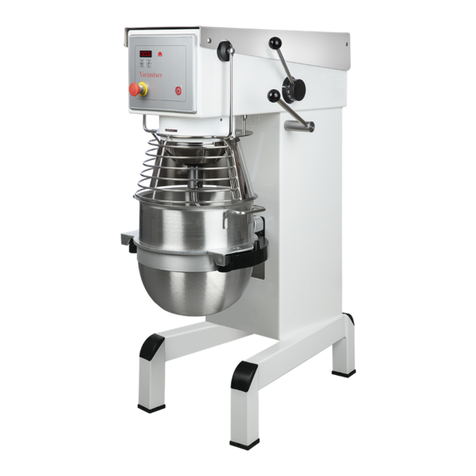
Middleby
Middleby Varimixer V Series operating instructions

MULTIQUIP
MULTIQUIP Essick Series Operation and parts manual

Arzum
Arzum AR 1066 instruction manual
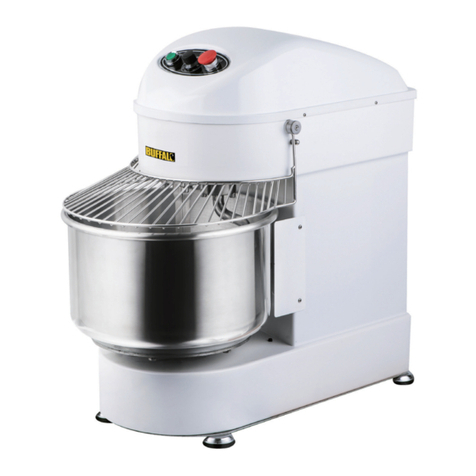
Buffalo
Buffalo CP821 instruction manual
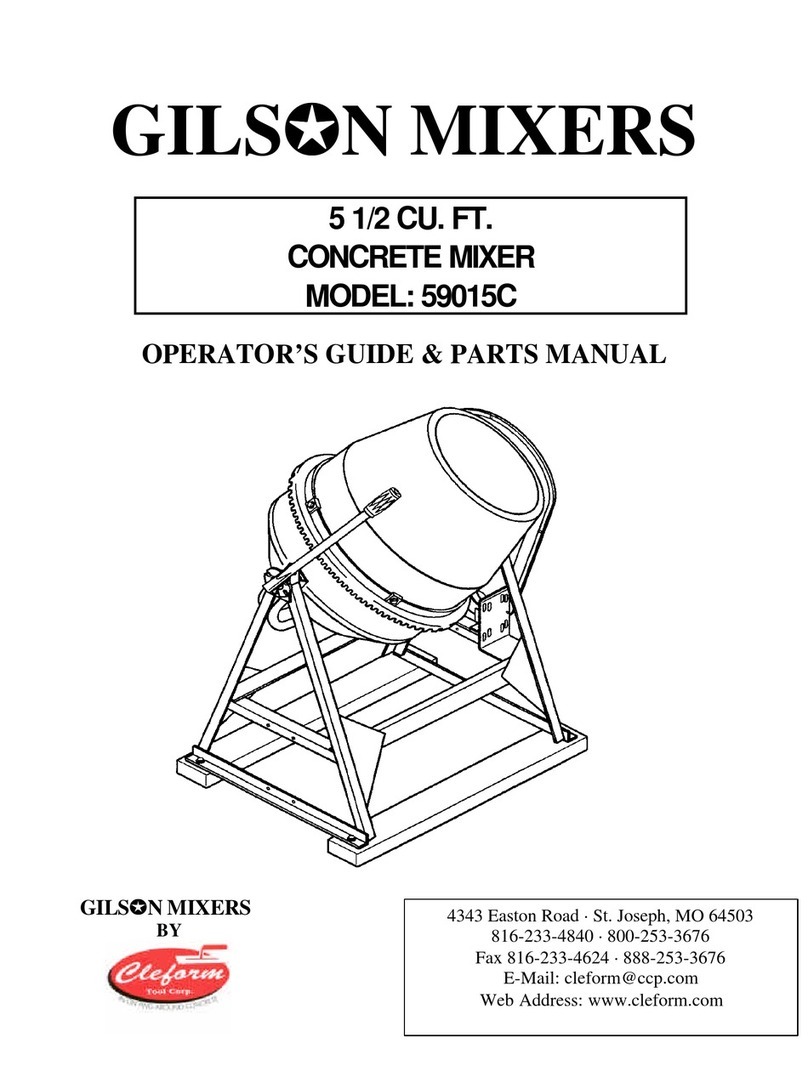
Cleform
Cleform Gilson 59015C Operator's guide & parts manual

Hamilton Beach
Hamilton Beach Drink Master user guide

